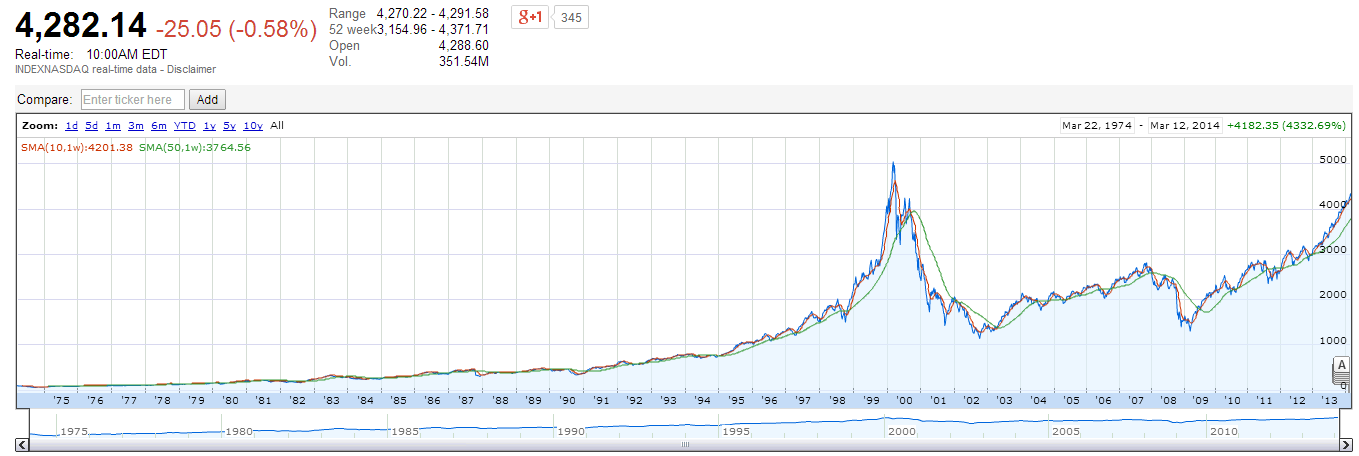The volatility in the indices long ago was similar in magnitude to what it is today. The problem you are seeing in your plots is one of compounding and scaling.
Think of it this way- back in the mid 70's the magnitude of NASDAQ pricing was around \$100. Today it is on the order of \$4000, a change of 40x. In linear terms, a 1% change in the index today (\$40) would have been a 40% change in the index back in 1975. This goes the other way as well, so on a linear y-axis plot, a moderate swing in value in 1975 (say 1%, or \$1.00) is indistinguishable in 2014 terms.
There is a way to see the relative volatility over the years in a plot, and that is to use a logarithmic y-axis. I see you are using google's charting app. Under the chart there is a "settings" button. Click it, and select "logarithmic vertical axis." It makes a big difference.

